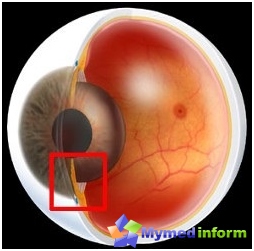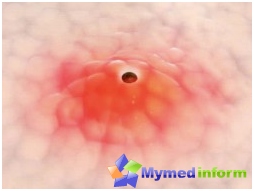Causes

Quite often endocarditis develops as a result of other diseases. The disease is often formed against the background of the already existing heart pathology. And inflammation can develop at any age.
The pathogens of the disease are various bacteria, and they are numbered about 128 different species. In particular, endocarditis causative agents include staphylococci, streptococci and enterococci. When the first symptoms appear, most people do not pay special attention to them and therefore do not hurry to contact the doctor. The first visit to the doctor many occurs only a couple of months after the occurrence of symptoms.
In independent form, it is predominantly a bacterial endocarditis, which is most often caused by Streptococcus. However, this form meets relatively less often an endocarditis, formed against the background of other diseases.
It is noteworthy that the likelihood of developing this disease is higher in people with weakened immunity, as well as people who have foci of chronic infection. The risk group for an obvious reason includes people with acquired and congenital heart defects. Also prone to the development of the disease People with chronic tonsillitom and Furunkulas.
It must be said about what way infection occurs. So, for example, infection can get into the heart with a blood current. It is worth noting that inflammation is mainly developing on the valves that were previously changed. A person may have congenital and rheumatic valve changes. Thus, it takes a layering on the already existing vices of the heart.
Infection from valves can spread to endocardia, which leads to its inflammation. In this case, the inflammation of the valves lose their properties, melted and begin to skip blood in the opposite direction. As a result, serious heart failure is developing, and on the valves grow up vegetation. And most often amazed aortic and mitral valves. Sometimes it can also be deformed by a three-range and pulmonary valve. At these valves, the fibrin and platelets are sedentiated. When the valve sash is no longer able to climb, the valve vapor is formed, which is able to lead to the development of heart failure.
Our site notes that the growth of microorganisms is dangerous in that the elements of growing at any time can break away from the inner surface of the heart and with blood current to get into the rest of the body. In this case, the infection will occur in other tissues and organs, and not only on heart valves. Large vessels are blocked, due to which blood circulation in various organs. Endocarditis can flow both in acute and in the subacute form. Approximately 5-20% of patients with congenital heart disease occurs secondary endocarditis.
Symptoms

Diagnostics are carried out in the presence of such symptoms as fever with chills, valve defects and thromboembolic complications. In the diagnosis of this disease, it is also necessary to carry out a bacteriological study in order to accurately determine the causative agent of the disease. Further treatment of endocarditis largely depends on.
Often the patient is prescribed an electrocardiogram that allows you to identify signs of increasing the volume of left ventricle. If there is a lesion of the pulmonary artery valve or the lesion of the three-rolled valve, the signs of the hypertrophy of the right ventricle are determined on the electrocardiogram. ECG can reveal endocarditis in the early stages. Therefore, in order to increase the chances of successful treatment of endocarditis, you need to see a doctor as soon as possible. For the examination and detection of minimum deviations in the functioning of the heart muscle, the cardiography is very helpful.
If there is a suspicion of infectious endocarditis, then during the diagnostics, sowing of blood for sterility is usually assigned. When carrying out this type of diagnosis, it is important exactly how blood is closed in a patient. That the result was more reliable, the collection of blood for sowing must be carried out at least two or three times.
Echocardiography is used to diagnose endocarditis. This type of surveys are recommended to carry out all patients who have suspicion of infectious endocarditis. After diagnosis, it is necessary to determine the form of the disease.
Treatment

In the treatment of endocarditis often used Antibiotics. And they are accepted long enough and in large doses. In addition, various methods of immunotherapy are actively used. In the course of the treatment of endocarditis, immunomodulators are also used, such as thymiline and T-activin. If there is a need, the patient is prescribed short-term courses of glucocorticoid hormones, antiagregants, heparin, hemosorption and ultraviolet blood irradiation. If treatment with antibiotics is ineffective, then a re-examination of blood is usually applied and other antibiotics are prescribed, given their sensitivity. In the event that the antibacterial therapy of endocarditis turns out to be ineffective, then the question of the need for surgical treatment by removing the affected valve and the installation on its place of the prosthesis. Such are the main methods of treatment of endocarditis.









